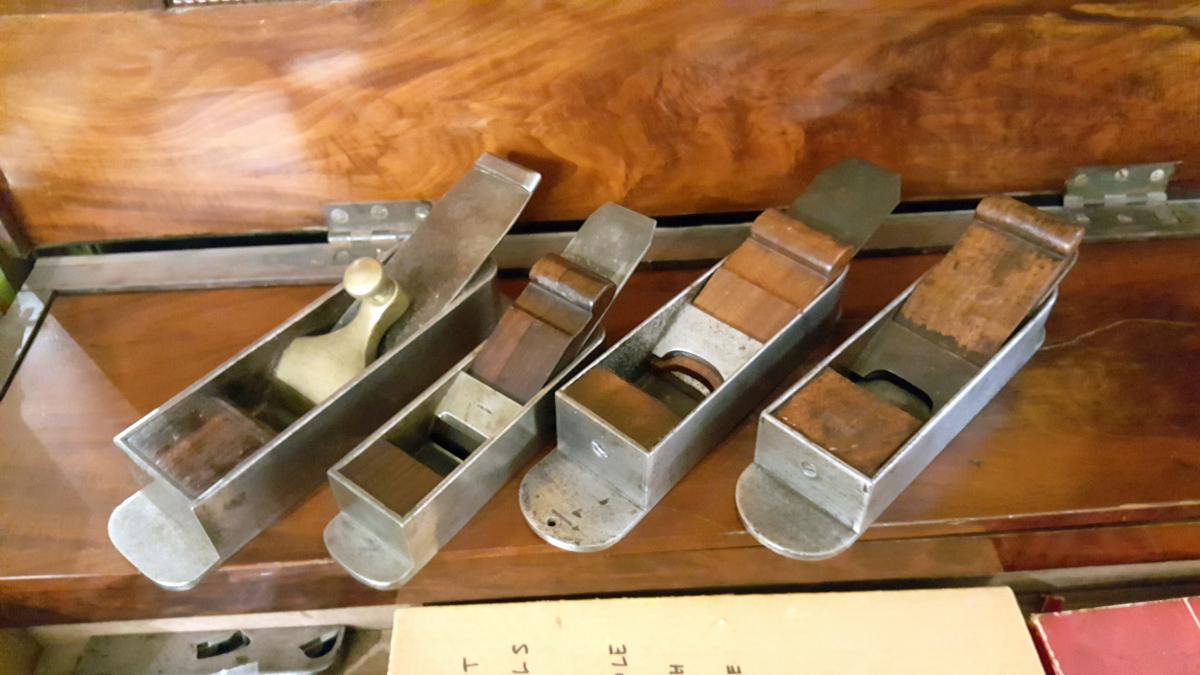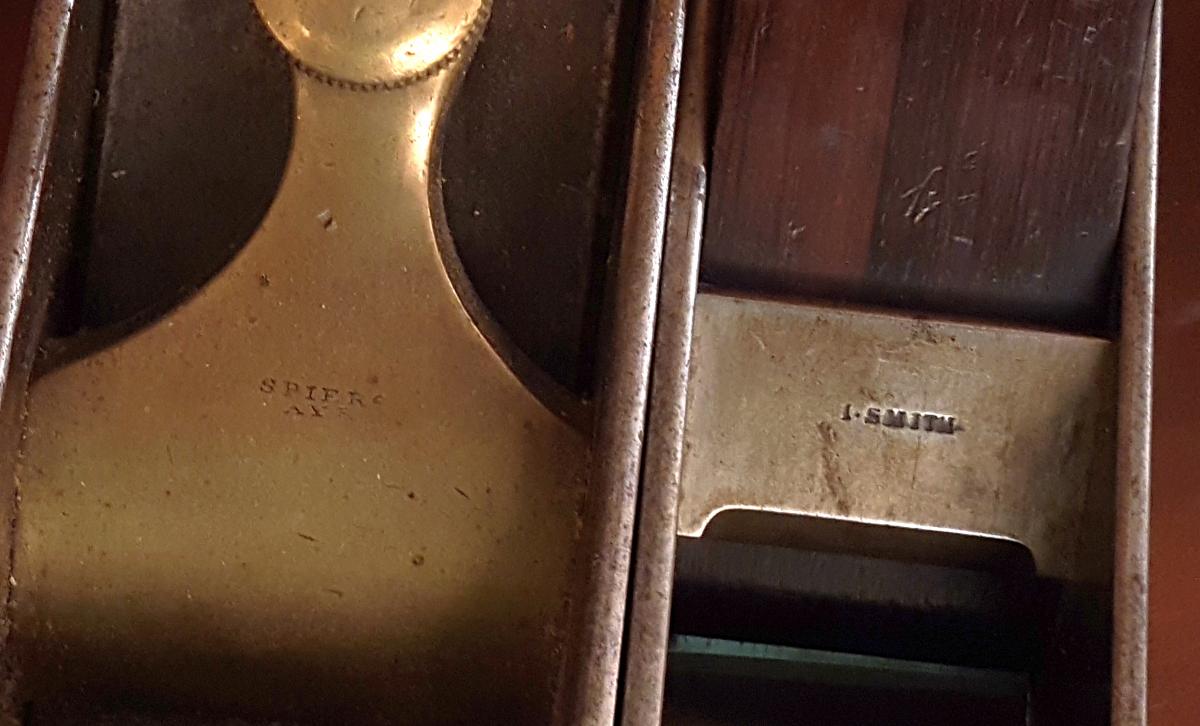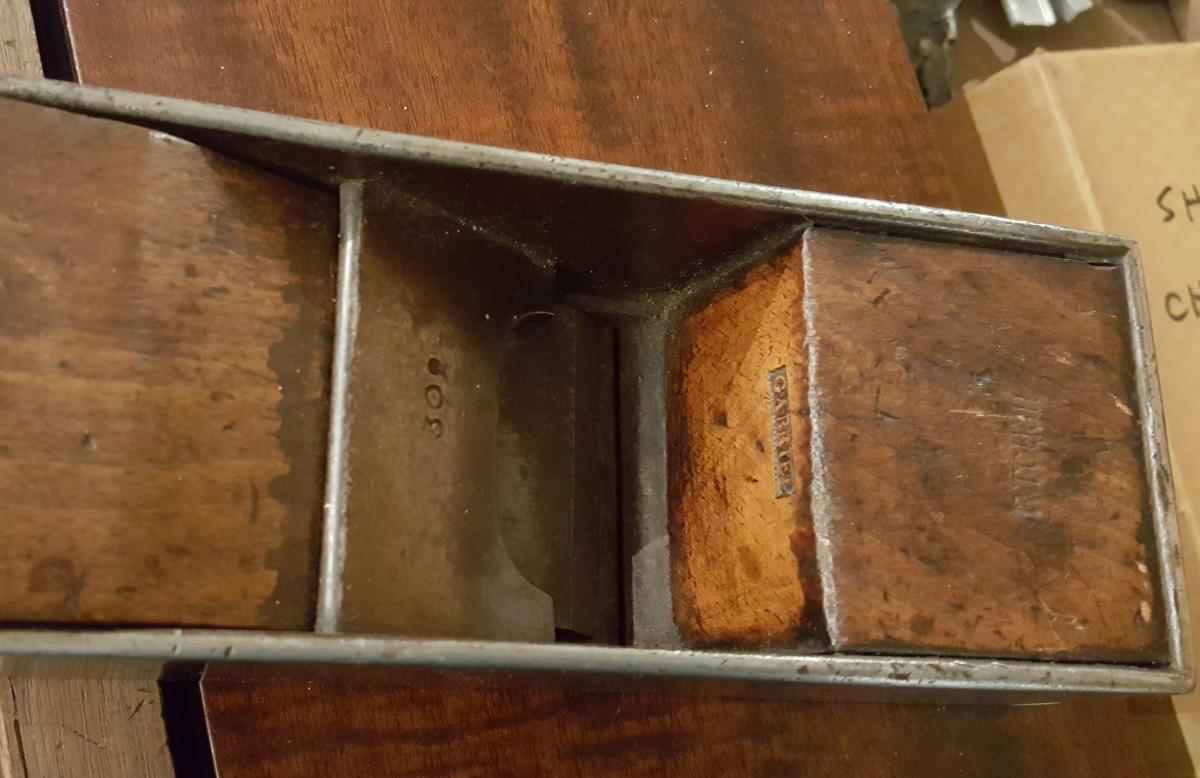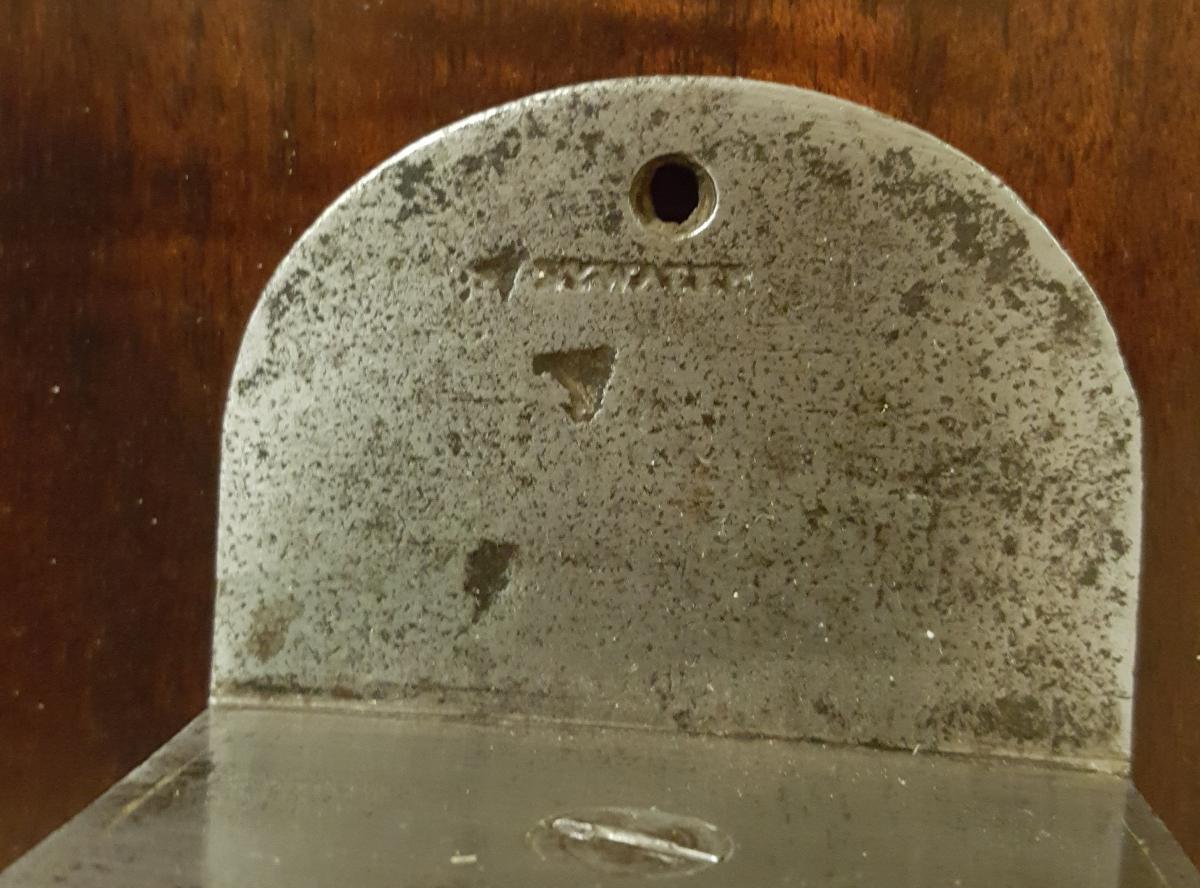|
|
02/22/2017 |

This blog entry was derailed - in a good way.
I was totally in the midst of working on a post about mitre plane geometry when I made a discovery that totally put me in another direction. In the picture above are 4 mitre planes. I had laid out four planes in what I thought was chronological order, using what I knew about the planes and their makers.
From left to right:
Spiers - Latter part of the 19th century.
I Smith - Mid 19th Century (1860's?)
??? - Very early 19th century - Unmarked, possibly by Gabriel.
Christopher Gabriel - late 18th century.
The maker's stamps on the Spiers and Smith planes are on the lever cap or bridge. This is sort of what we would expect from any iron plane after the 1820's. It was pretty easy to stamp the bridge, and it's a spot that didn't get a lot of wear.

In the very early iron planes - such as the first two on the right - the steel stamps used for stamping wooden planes weren't that hard and wouldn't last very long stamping wrought iron. They were designed for wood. So Christopher Gabriel stamped his name on the inside of the front infill. On wood. On the side of the front infill which is nearly is nearly impossible to stamp once the plane is assembled so it won't be over-stamped by owners over the years. This particular plane has some numbers stamped in the bridge, which was not unusual for a Gabriel plane, but number stamps were easier to replace than a custom-made name stamp. Why Gabriel stamped numbers on the planes has been a subject of much speculation over the years.

I pegged the second plane plane from the right as early because of its construction, and possibly by Gabriel, but it's unmarked where it should be - on the wood. There's also some discoloration on the bridge. Since the plane shared some styles with Gabriel, I thought it might have been one of his. The wedge is a replacement. The dealer who sold me the plane back in 2000 thought the same about all the dating.
Now, putting the planes in order for this blog entry shook everything up.
As I put the planes in order for the photograph, I saw a stamp that the dealer overlooked -- and I overlooked for nearly twenty years. The plane bears a stamp just under the hole in the front of the plane. The "WATER" part was pretty easy to read, but it took awhile to suss out the "BY" at the front. "BYWATER."
Richard Bywater made planes in London from 1790-1814. He was a contemporary of Christopher Gabriel who owned a larger firm that was also in London.
The chances of Bywater not knowing of Gabriel's iron planes would be zero. One characteristic of Gabriel's planes is the long toe. Like the Bywater plane. But why is the maker's name stamped on the toe?
Maybe it's not a maker's stamp but an owner's? It's possible, but I don't think so. I think the random chances of an unmarked early plane being stamped with the name of a planemaker isn't zero but it's small. (Even if the stamp doesn't exactly match any of the marks included in Goodman and Rees's "British Planemakers from 1700.") And if we are talking about Bywater the planemaker, it's more than possible he didn't make the plane himself as the tools of metalwork are different than the tools of woodwork. The reason the plane would have been marked on the toe is that there are very few planes on an assembled mitre plane where you can swing a hammer enough to mark the metal deeply without running the risk of bending something. I certainly wouldn't risk it.

If Bywater didn't make the plane, who did? Craftwork in 18th century London was done by small independent Little Meisters who either worked in their own small quarters or worked in a larger shop, working on their own but buying parts from the master, all paid on piecework. Did this plane come out of the Gabriel shops, wholesale, to be retailed by Bywater? Was it made by a Little Meister working for Gabriel, made on the sly to sell to Bywater?
I don't know: it's all speculation. Do you have any ideas?
|
Join the conversation |
|
 Joel's Blog
Joel's Blog Built-It Blog
Built-It Blog Video Roundup
Video Roundup Classes & Events
Classes & Events Work Magazine
Work Magazine






I could also imagine a case where the infill maker may have sold an unmarked "second" or incomplete plane shell to another local planemaker unable to afford a finished plane and then he marked the hybrid plane with the mark he typically used for his irons (the only Bywater planes google found were molding planes)